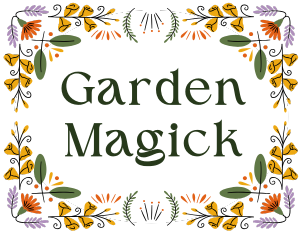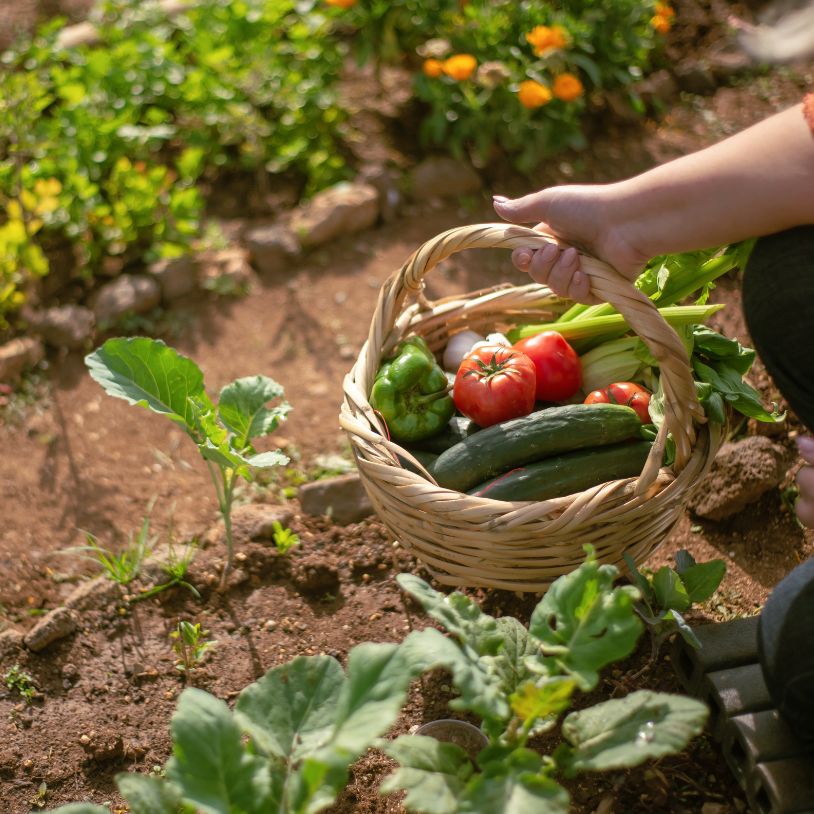
Essential Gardening Tips for Beginners
By Erin Duffy Osswald
Starting your first garden can be both exciting and daunting. There are so many decisions to make and tasks to complete that it’s hard to know where to begin, and it can feel overwhelming. But don’t worry—anyone can garden with a little guidance!
This post will walk you through how to start a garden as a beginner, with everything you need to consider to set up, organize and maintain a successful garden, even if you’ve never grown a plant before.
Get Started with these 7 Steps
to Gardening Success!
STEP 1 – Decide What Kind of Garden You Want
Before buying a single seed or tool, take some time to think about what type of garden you want.
Vegetable Garden, Flower Garden or both gardens in one!
Vegetable Gardens give the satisfaction of growing your own fruits and vegetables for food. Flower Gardens create beautiful spaces filled with different colors and fragrances.
Because flowers attract pollinators for their vegetables, many gardeners choose to grow both.
Container Garden, Raised Bed Garden or In-Ground Garden?
Container gardens are perfect for small spaces like balconies or patios. Raised Bed Gardens provide elevated growing spaces and can offer better drainage and soil control while being easier on your back. In-Ground Gardens are a traditional approach—preparing and planting directly in your yard’s soil.
Many gardeners find value in combining approaches—such as pairing a small vegetable plot with container herbs or a mixed flower and vegetable garden.
STEP 2 – Choose Garden Location
Understanding your unique growing conditions is crucial for finding the perfect spot for your garden.
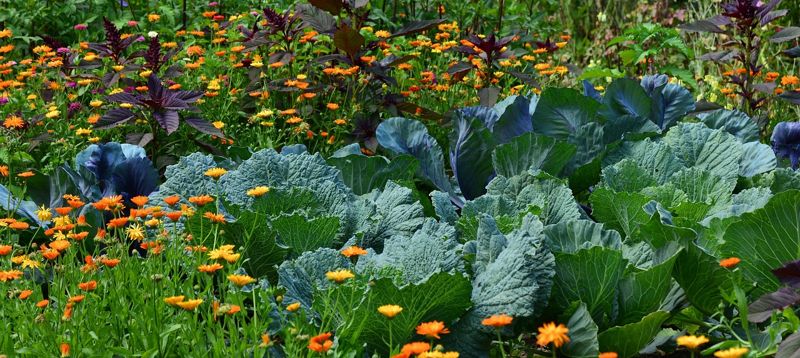
Factors to Consider
Sunlight: Most vegetables and many flowers need 6-8 hours of direct sunlight daily.
Water Access: Gardens need regular watering, make sure you can easily reach your growing space with a hose or watering can.
Space Available: Be realistic about your available space, but even a window sill or small patio can become a thriving garden with the right approach.
Soil Quality: Good soil is the foundation of your garden. Your existing soil may need compost or other amendments to add nutrients, or you may have to purchase soil for containers.
Know Your Growing Zone: Look up your USDA Hardiness Zone to understand:
- First and last frost dates
- Length of growing season
- Plants that are well-adapted to your region
STEP 3 – Gather Essential Gardening Tools
You don’t need every tool in the garden center to get started. Here are the basics:
BASIC GARDENING TOOL STARTER LIST
- Garden Hand Trowel
- Shovel
- Garden Bow Rake
- Pruning Shears
- Watering Can or Hose with adjustable nozzle
- Durable Gloves
- Basic soil amendments (Compost, Mulch, Fertilizer)
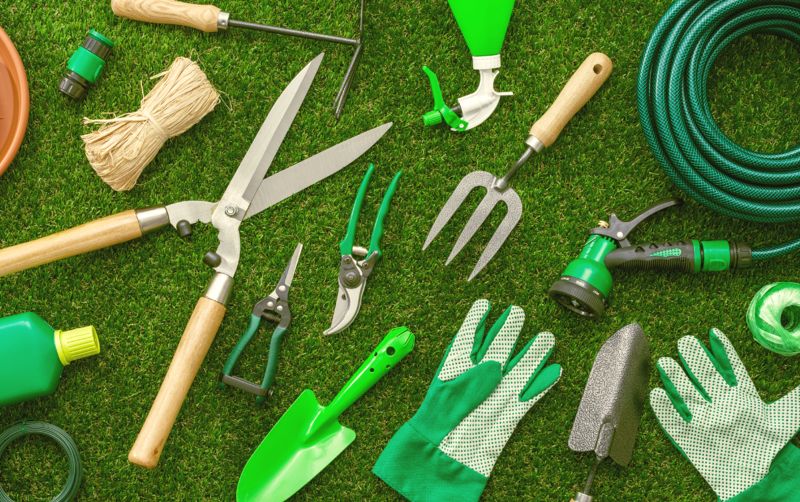
STEP 4 – Plan Your Garden Layout
A little planning prevents many problems!
SKETCH YOUR GARDEN
Whether you are planting in containers, or in the ground, draw a rough plan of where everything will go. Consider mature plant sizes and spacing requirements.
PRO TIP: Using paper with a grid pattern can help you transfer your design to your garden. For example, every square inch in your drawing can equal a square foot in the ground.
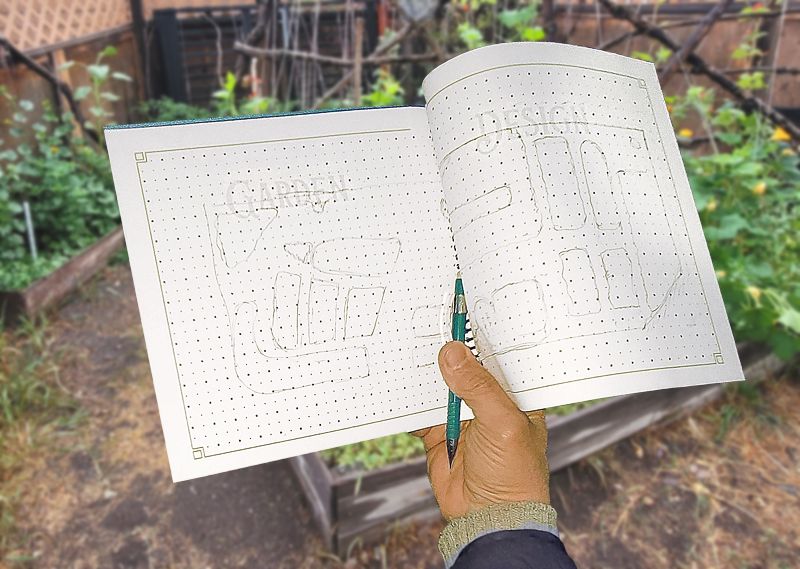
My Astrological Garden Planner and Guide provides garden design layout pages like this, (and many more tools!)

STEP 5 – Plant Your Garden
Now comes the fun part: planting! Whether using seeds or starter plants, proper planting technique matters.
PLANTING FROM SEED
- Follow packet instructions for planting depth and spacing
- Keep soil consistently moist until germination
- Thin seedlings as needed once they emerge
USING STARTER PLANTS
- Dig holes slightly larger than the plant container
- Place in holes at the same depth they were growing before
- Fill around roots and water thoroughly
PLANT AT THE RIGHT TIME
Some plants do better when planted early in the season, while others should be planted after the last frost. Make sure you know the best planting times for your specific location and plants.
One time-tested way to determine the absolute best times for planting (and all your gardening chores) is the ancient practice of moon-phase gardening. Also known as lunar gardening, this method aligns planting and other gardening activities with the cycles of the moon. Gardening by the moon isn’t just a whimsical idea, the effects of the moon on plants are believed to be connected to its gravitational pull, which can affect water movement in the soil and within plants. The moon’s light also plays a role, influencing germination and photosynthesis.

Proponents believe that moon-phase gardening can lead to healthier, more vigorous plants, increased yields, and a deeper connection to nature. Many organic gardening and sustainable gardening enthusiasts incorporate lunar cycles into their practices.
My Astrological Garden Planner and Guide includes a comprehensive handbook, designed to take you through each step of the astrological and moon-phase gardening process, with everything you need at your fingertips to plan, track, and record your moon-phase gardening.
STEP 6 – Garden Care and Tending
Before we dive into organization strategies, let’s look at the various gardening chores you’ll need to consider.
GARDENING CHORES CHECKLIST – The Basics
Regular Care Keeps Plants Healthy
•Water deeply when needed
•Pull weeds when they’re small
•Add mulch to reduce weeding
•Watch for bugs or problems
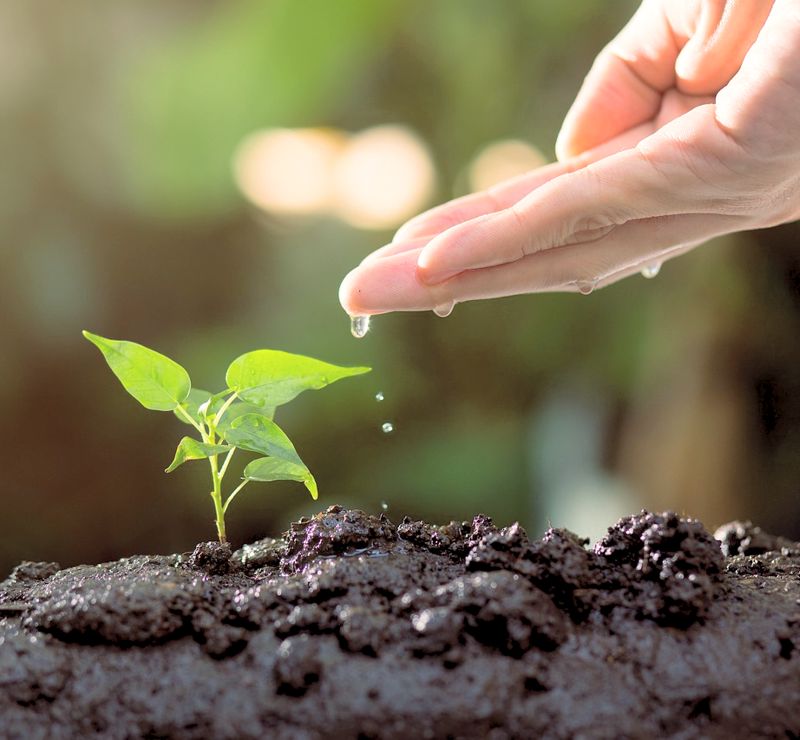
STEP 7 – Organize Your Garden Chores
While there are many chores to consider, these tactics can help you organize.
Gardening can feel overwhelming, with what seems like an endless list of tasks and responsibilities. By creating a structured routine, you’ll transform gardening from a daunting challenge into an enjoyable activity.

“The key to success isn’t having a perfect garden from day one, but developing a systematic approach to managing your garden chores.“
CHORE PLANNING ESSENTIALS
- Use a Garden Planner
- Develop a Realistic Maintenance Schedule
- Keep a Garden Journal
- Learn from Each Season
My Astrological Garden Planner is a comprehensive handbook designed to help jump start your chore success, taking you through each step of the gardening process from planning, to planting, to tending, and harvesting. Complete with monthly planting calendars and weekly calendar planning pages, as well as pages for garden design, tracking planting information and recording harvest yields.
The handbook also begins with an illustrated guide that leads you step by step through understanding and working with astrological and moon-phase cycles in all your gardening chores, and the monthly calendars contain daily astrology information for the moon and sun to help you chart the course for a bountiful gardening season.
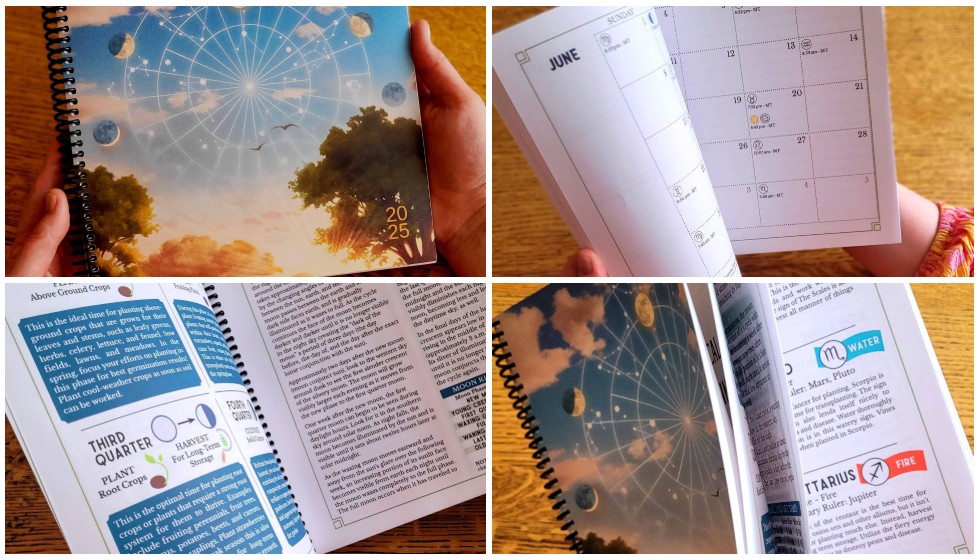
Final Thoughts for New Gardeners
With thoughtful planning, plant selection, and organized chores, your first garden will provide valuable learning experiences. The most important step in gardening isn’t perfection—it’s beginning.
Gardening is a journey of continuous learning and enjoyment. Start small, accept that some plants will fail despite your best efforts, and don’t be afraid to make mistakes.
Gardening isn’t just about the end results—it’s about the process. By following these steps and tips, you’ll be well on your way to creating a thriving garden you can enjoy.
Happy gardening!
Want to get started learning Moon-Phase gardening?
Join my FREE Moon-Phase Gardening Masterclass!
This FREE Moon-Phase Gardening Course will show you how to optimize your growing by working with the four moon phases.
In this practical, comprehensive class you’ll discover lunar secrets for:
❧ Optimal Times for Planting
❧ Celestial Garden Chores Decoded
❧ Aligning Your Gardening With an Elegant, and Natural System
